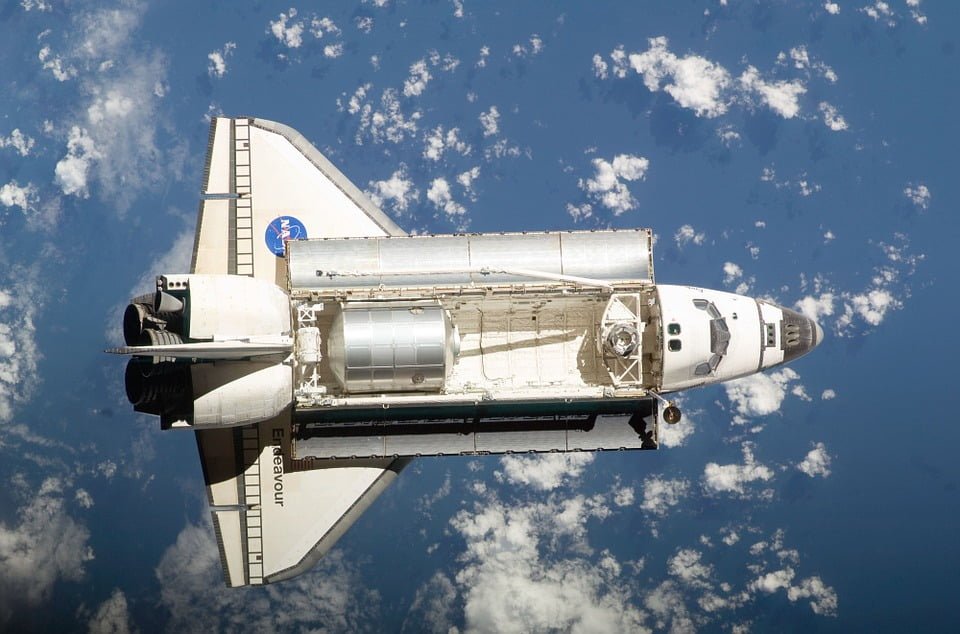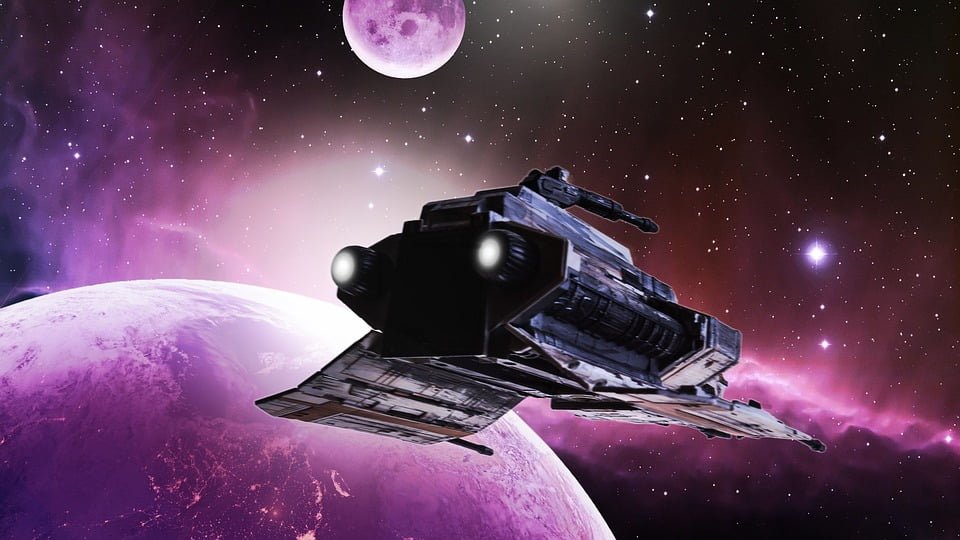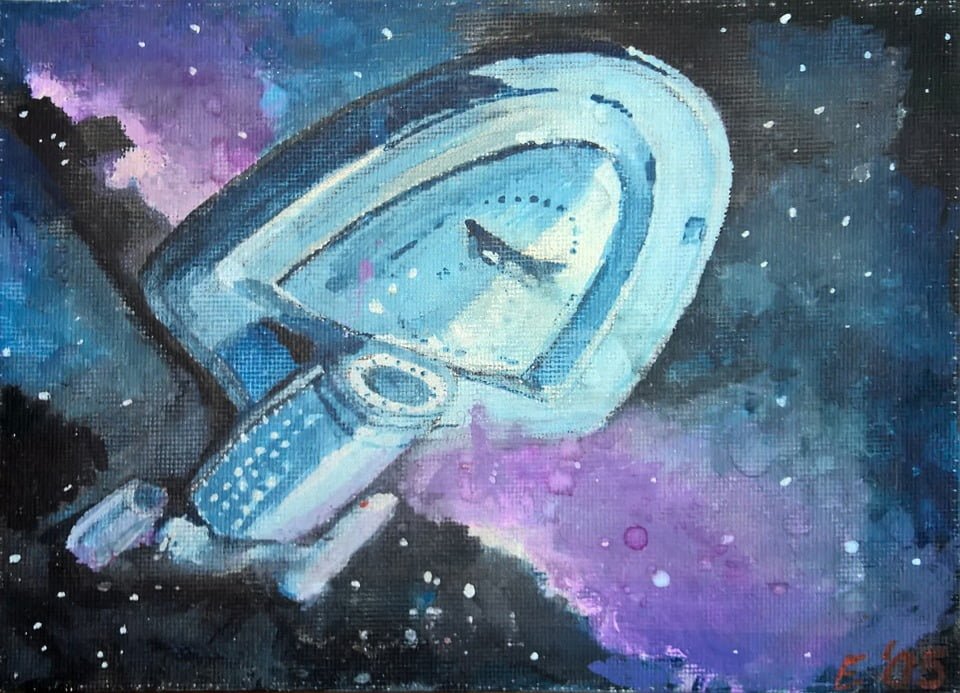Spacecraft


A spacecraft is blasted into space by its launch vehicle or rocket. The rocket is the only machine powerful enough to reach ‘escape velocity’ – the speed needed to break free from the pull of earth’s gravity. Usually, the spacecraft is folded up in the nose cone of the rocket.
Different sizes of rockets are used for different sizes of spacecraft. One of the heaviest was the Cassini-Huygens mission to Saturn. At its launch in 1997, with all its fuel and equipment on board, it weighted 5.6 tonnes-almost as much as a school bus. It needed a huge titan iv rocket launcher to power it into space.
Spacecraft and other objects carried by rocket are called the ‘payload’. Most rockets take their payload into orbit around the earth. The nose cone opens to release the craft stored inside. Parts of it unfold, such as the solar panels that turn sunlight into electricity.
Craft are tested while in orbit around the earth, to check the engines, radio communications, cameras and other parts are working. If there is a problem, a robot repair mission or some astronauts may be sent up. If everything is in working order, the craft can boost away from earth to begin its long journey.
Most spacecraft travel for months, even years, to their destinations. The fastest journey to Mars took just over six months, by Mars Express in 2003. Pioneer 10 took 11 years to reach Neptune in 1983.
Launched in 2001, spacecraft deep space I went on a trip to visit asteroids and comets. Its fuel tank was the size of a small suitcase, yet the fuel lasted for over three years.

Guiding the spacecraft on its course is vital. A tiny error could mean that its distant target by millions of kilometres. Mission controllers on earth regularly check the craft’s position with radio signals using the Deep Space Network(DSN). The DSN Is made up of three huge radio dishes located in California, USA, Madrid in Spain, and Canberra, Australia.
Craft often pass other planets or moons on their journeys. Like earth, these objects all have a gravitational pull, and this could send a craft off course. However, a planet’s gravity may be used to propel the craft in a new direction to save fuel. This is known as a gravity-assisted flyby or ‘slingshot’.
For long periods much of a craft’s equipment shuts down to save electricity. It’s like an animal hibernating in winter or a mobile phone on standby. When the craft ‘hibernates’ only a few vital systems stay active, such as navigation.
As the spacecraft approaches its target, its system power up and it ‘comes to life’. Controllers on earth test the craft’s radio communications and other equipment. At such enormous distances. Radio signals can take minutes, even hours, to make the journey.
Among the most important devices, onboard a craft are cameras. Some work like telescopes to take a close-up or magnified view of a small area. Others are wide-angle cameras, which capture a much greater area without magnifying.
Other kinds of cameras can see types of waves that are invisible to the human eye. These include infrared or heat rays, ultraviolet rays, radio waves and x-rays. These rays and waves provide information about the target world, such as how hot or cold it is.

The magnetometer detects magnetic field which exists naturally around some planets including Earth. Gravity meter measures the target object pull of gravity. This is especially important in the final stage of the journey the landing. Some spacecraft also has space dust collectors.
The information from the camera and sensors is turned into radio signal codes and beamed back to earth. To send and receive these signals, the graph has one or more dish-shaped antennae. These must be in the correct position to communicate with the dishes located on earth.
On a flyby mission, a spacecraft comes close to its target. It doesn’t go into Orbit around it or land – it flies on words and away into deep space. Likewise for part of longer missions to even more distant destinations. In these cases, the flyby may also involve gravity assist.
A flyby craft may pass its target several times on a long, lop-sided path, before leaving again. Each pass gives a different view of the target object. Dark rocks camera sensors and other equipment switch on to take pictures and record measurement, then turn off again as it flies away.
The ultimate flyby craft was Voyager 2. It made the Grand tour of the four outermost planets, which are only suitably aligned every 175 years. Voyager 2 to blasted off in 1977 and flew past Jupiter in 1979, Saturn in 1981, Uranus in 1986 and Neptune in 1989. This craft is still sending back information from a distance twice as far as Pluto is from Earth.

In 2001, after visiting the asteroid Braille, Deep Space I flew past Comet Borrelly at 16 km per seconds! At its closest, the craft was just 2200 kilometres from the comet’s solid centre, which is as big as Mount Everest. Deep Space 1’s cameras took over 30 pictures before the craft was shut down.
On many exploring missions, the craft is designed to go into orbit around its target world. a craft that do this are called orbiters, and they provide a much longer, closer look than a flyby mission.
One of the most elliptical orbits was made by Mars Global Surveyor. At its closest, it passed Mars at a distance of 171 Km, twice in each orbit. The craft’s furthest distance away was more than ten times greater.
The Cassini orbiter, part of the Cassini-Huygens missions, has been through many changes of orbit around Saturn. Some went close to the main planet and some passed near to its rings. Other orbits took it past Saturn’s largest moons, including Enceladus, Lapetus and Mimas.

A spacecraft’s radar checks its average height above the surface. Radio or microwave signals beam down to the surface and bounce back. The time this takes tells the craft how far away it is. More detailed radar measurements map the surface far below.
A spectrometer analyzes different colours in light waves. Different chemical substances give off or reflect certain colours of light better than others. By reading this, the spectrometer can work out what substances are present in a planet’s atmosphere or on its surface.
The orbiter continually checks and adjusts its height and position. It does this using tiny puffs of gas from its thrusters, which stops the craft losing speed and crashing into the surface.
Some missions have landers that touch down onto the surface of their target world. Part of the spacecraft may detach and land while the others part stays in orbit, or the whole spacecraft may land.
The journey down can be hazardous. If the planet has an atmosphere (layer of gas around it) there may be strong winds that could blow the lander off course. If the atmosphere is thick, there may be huge pressure pushing on the craft.
If there is an atmosphere, the lender may use parachutes, or inflate its own balloons or airbags, to slow its speed. On the Cassini-Huygens mission, the Huygens lander used two parachutes as it descended for a touchdown on Saturn’s moon, Titan.
If there is no atmosphere, retro- thrusters are used to slow the craft down. These puff gases in the direction of travel. Most lenders have a strong, bouncy casing for protection as they hit the surface, or long, springy legs to reduce the impact.
After touchdown, the lander’s solar panels and other parts fold out. Its equipment and systems switch on, and it tests its radio communications with the orbiter and sometimes directly with earth.
Some craft is designed to smash into their target, and these are called impactors. The crash is observed by the orbiter and may also be watched by controllers on Earth. The dust, rocks and gases given off by an impact provide valuable information about the target object.
0 Comments